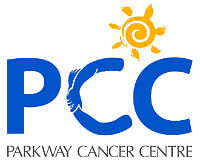
The advantages of using radiotherapy to treat cancer are numerous. It is non-invasive and preserves organ function.
It is one of the most common forms of cancer treatment - it serves a curative, adjuvant and palliative role. Cancers of the breast, brain, head and neck, prostate, bladder, cervix and uterus, skin, lung, oesophageal, anal and lymphomas are commonly treated with radiotherapy.
However, there are some common misunderstandings about radiotherapy. Here are some of them.
Myth 1: Radiotherapy will cause me to lose hair
Unlike chemotherapy which can have systemic effects over the entire body, hair loss after radiotherapy occurs only over the treated area.
For example, for radiotherapy to the breast, there could be hair loss in the armpit, but there would be no hair loss over the scalp. Hair loss in the head would only occur during radiotherapy to the brain.
Myth 2: Radiotherapy is painful
Like taking an X-ray, radiotherapy delivery cannot be felt and is completely painless.
However, after a few weeks, there can be skin soreness and dryness over the treated area.
If the treatment is to the head and neck, there can be throat or mouth ulcers.
If the treatment is to the pelvis, there could be bowel cramps, diarrhoea or urinary urgency. These symptoms are temporary and can usually be relieved with medication.
Myth 3: Radiotherapy will cause me to be radioactive
The vast majority of radiotherapy, both external and internal, does not involve leaving any radioactive materials in the body, so the patient will not be radioactive after treatment, and it is perfectly safe to be around loved ones, children, and also to share food with others.
Only in certain special treatments are radioactive material left in the body. In such cases the doctor will give clear advice to the patient on safety measures for the patient and family.
Examples of such treatment are radioiodine permanent seed implants for prostate cancer and radioiodine treatment of thyroid cancer.
Myth 4: Radiotherapy increases my chance of more breast cancer
Radiotherapy very slightly increases the chance of developing cancer in the radiated part of the body.
For adults, the risk of developing a radiation-induced cancer is only about 1 in 150 to 1 in 200.
The benefit of radiation therapy in cancer cure or reducing cancer recurrence after surgery is many times greater than the risk of radiation-induced cancer.
Myth 5: Radiotherapy will cause cancer to spread
Radiotherapy is very frequently given late in the course of cancer to palliate symptoms, often after the cancer has turned resistant to chemotherapy and spread widely or when the patient is too frail to receive any other therapy.
The terminal cancer will take its natural course no matter what is done. In such cases, patients' relatives may form a misunderstanding that radiotherapy given soon before death caused the tumour to progress and the patient to die. This is untrue.

